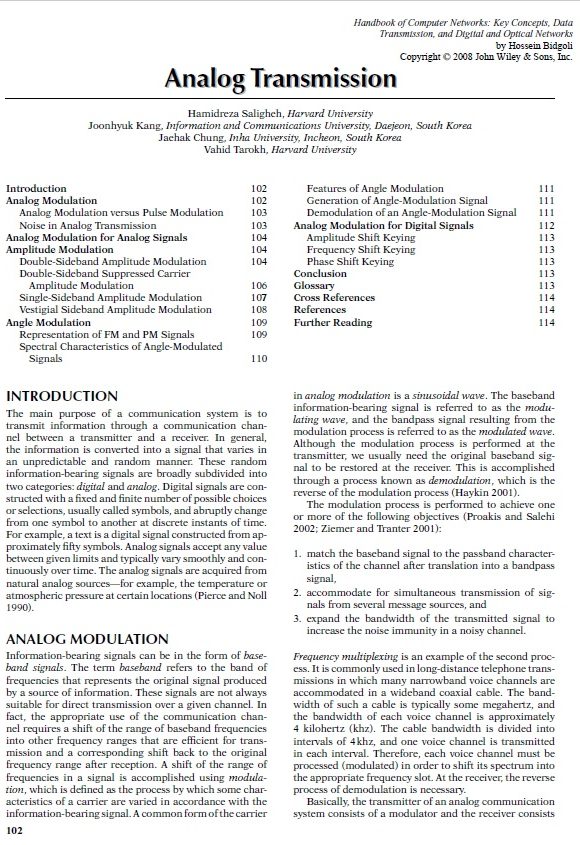Analog Transmission in the handbook of computer networks
Abstract
The main purpose of a communication system is to transmit information through a communication channel between a transmitter and a receiver. In general, the information is converted into a signal that varies in an unpredictable and random manner. These random information-bearing signals are broadly subdivided into two categories: digital and analog . Digital signals are constructed with a fixed and finite number of possible choices or selections, usually called symbols, and abruptly change from one symbol to another at discrete instants of time. For example, a text is a digital signal constructed from approximately fi fty symbols. Analog signals accept any value between given limits and typically vary smoothly and continuously over time. The analog signals are acquired from natural analog source —for example, the temperature or atmospheric pressure at certain locations (Pierce and Noll 1990) .

